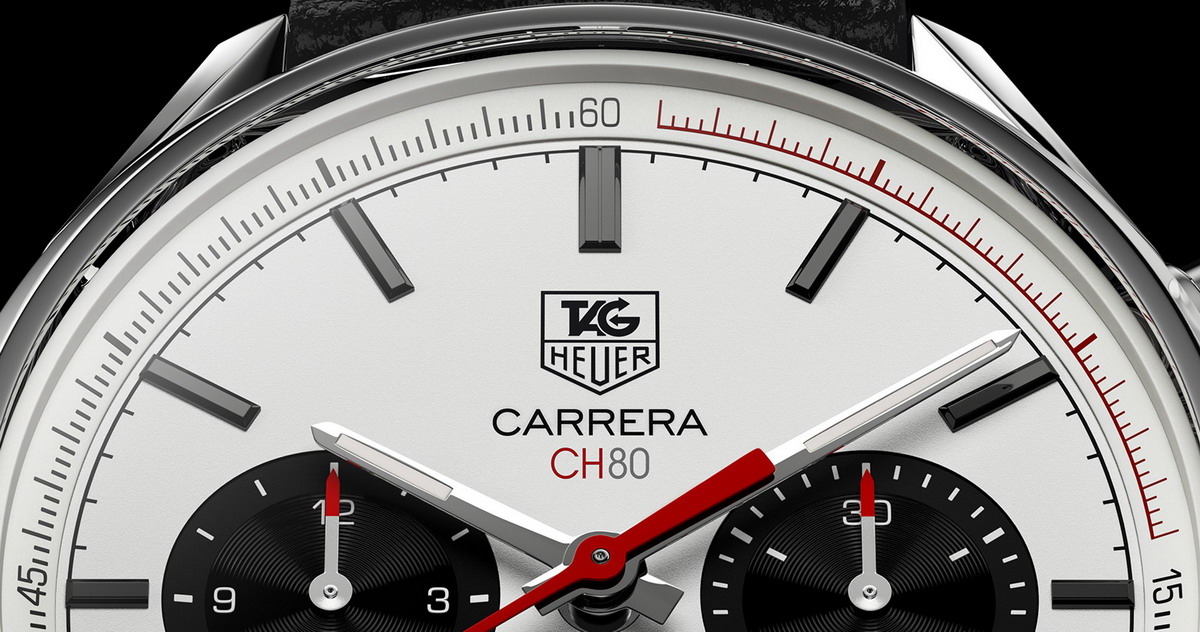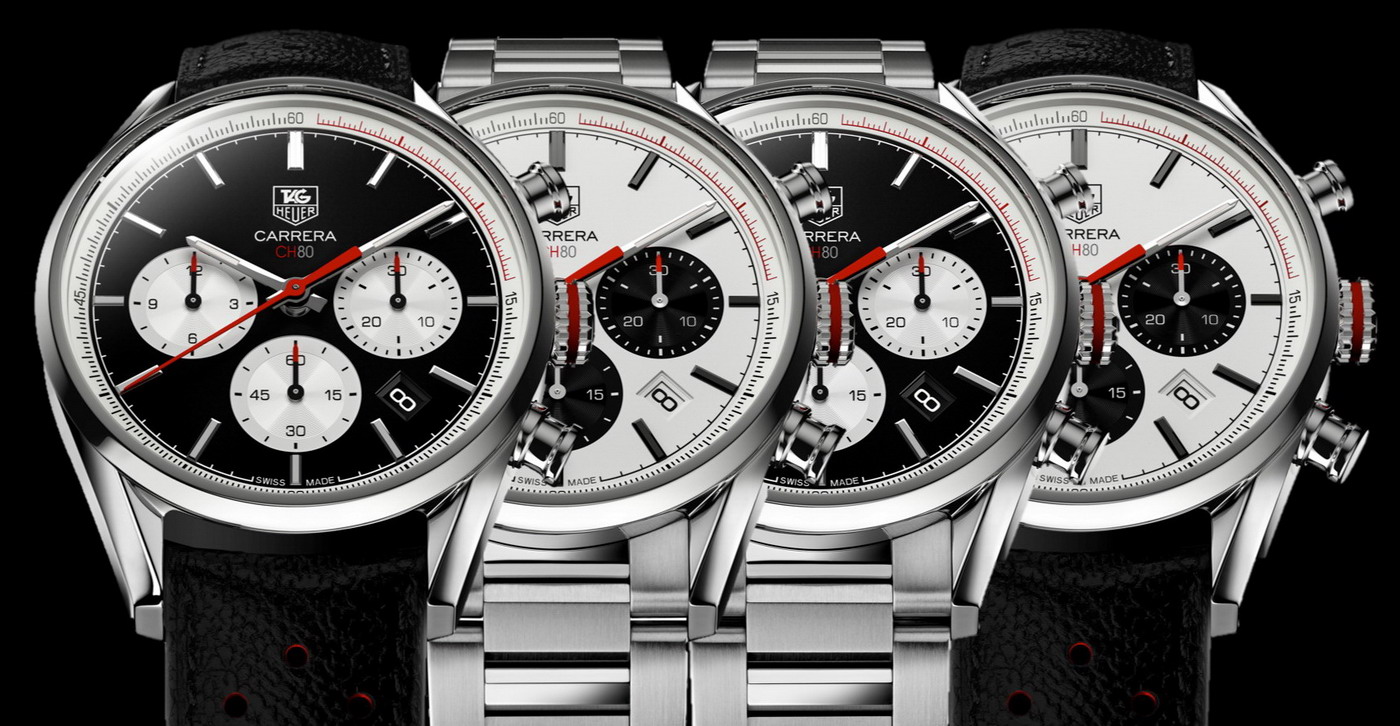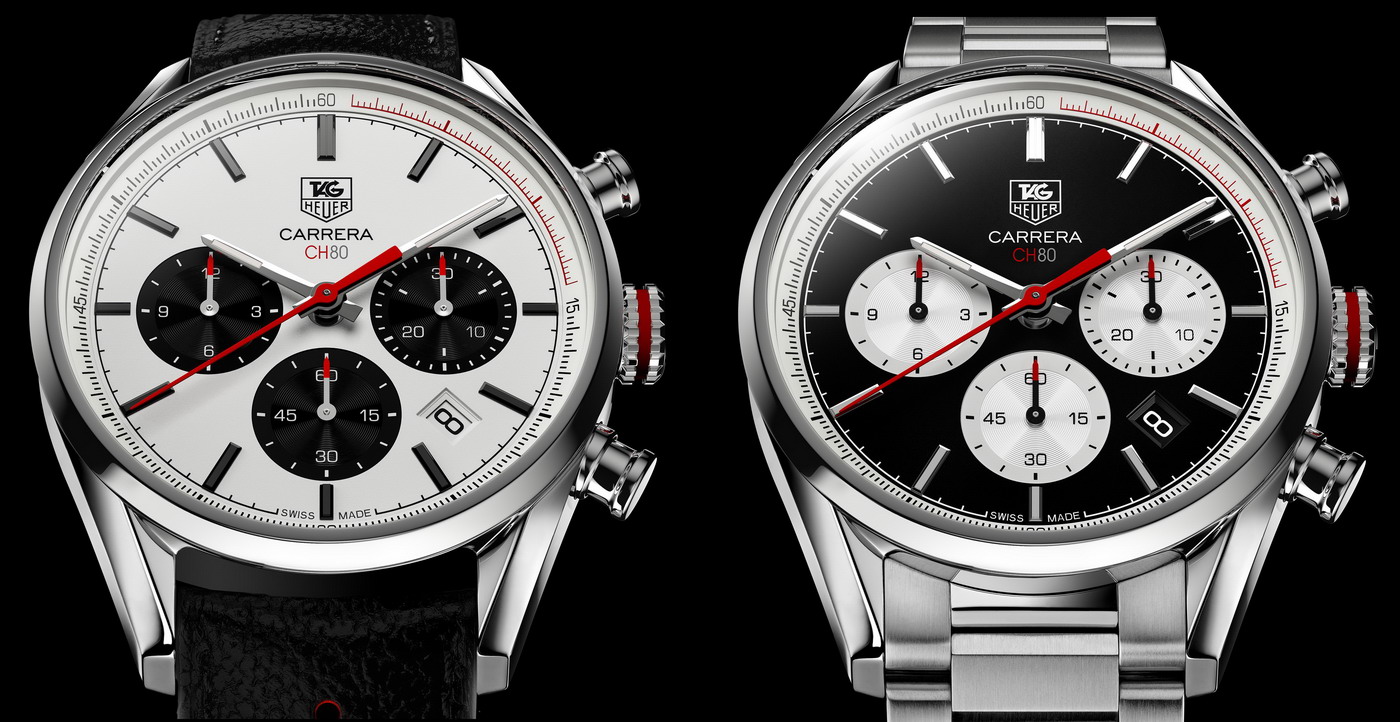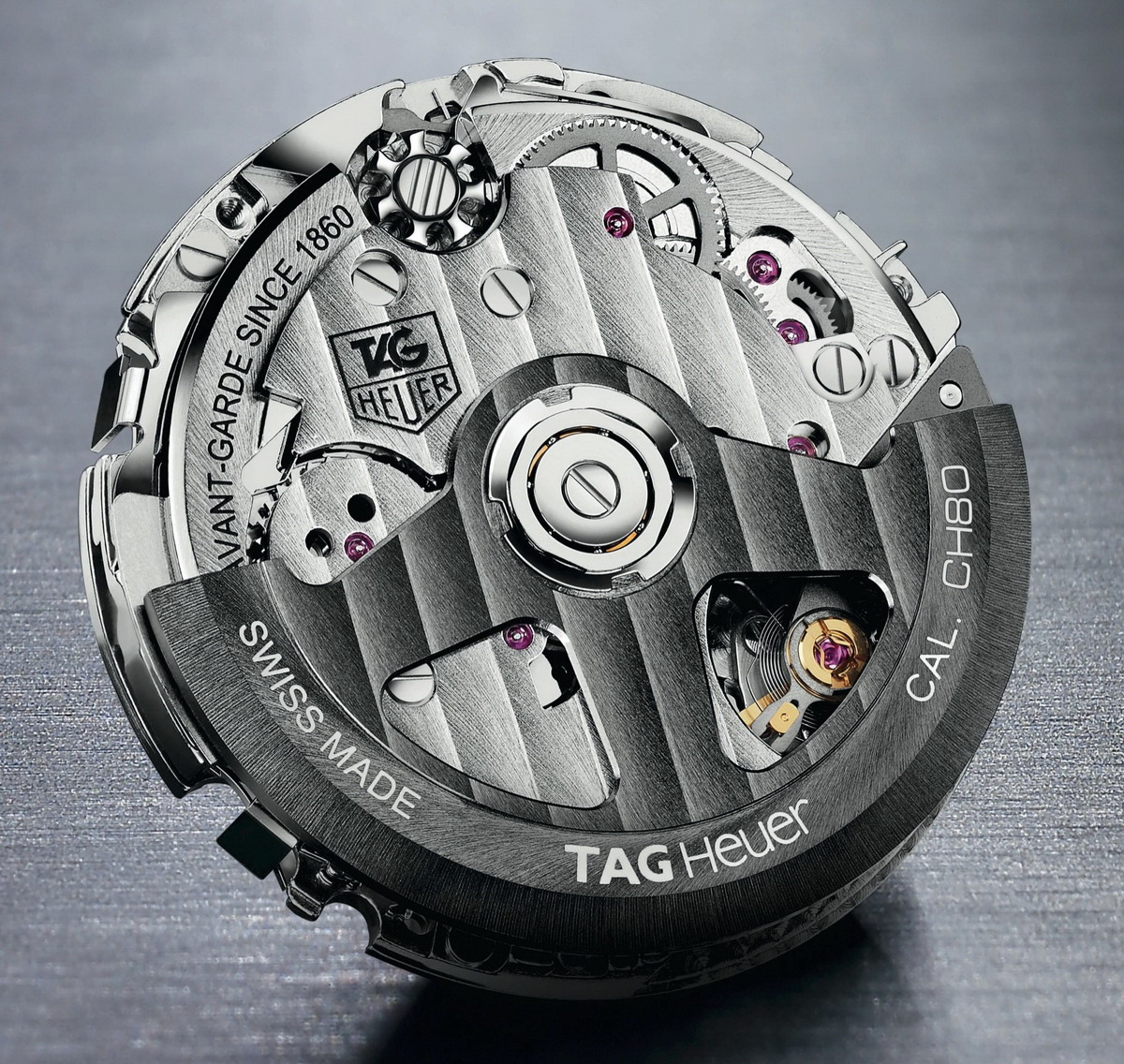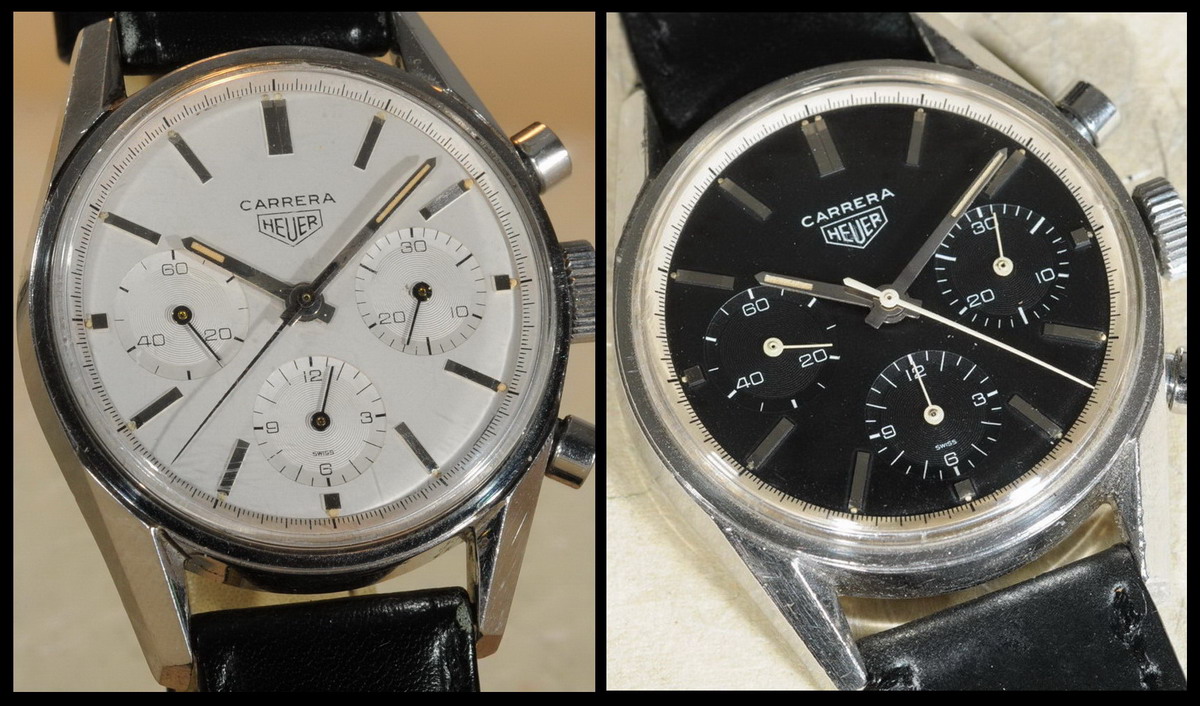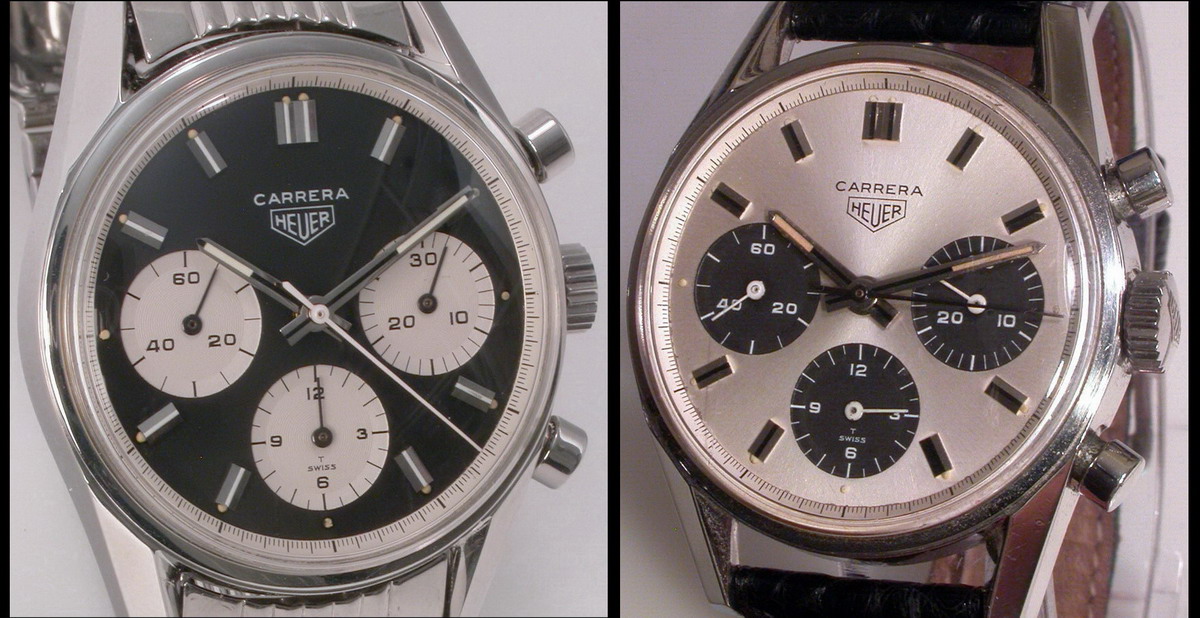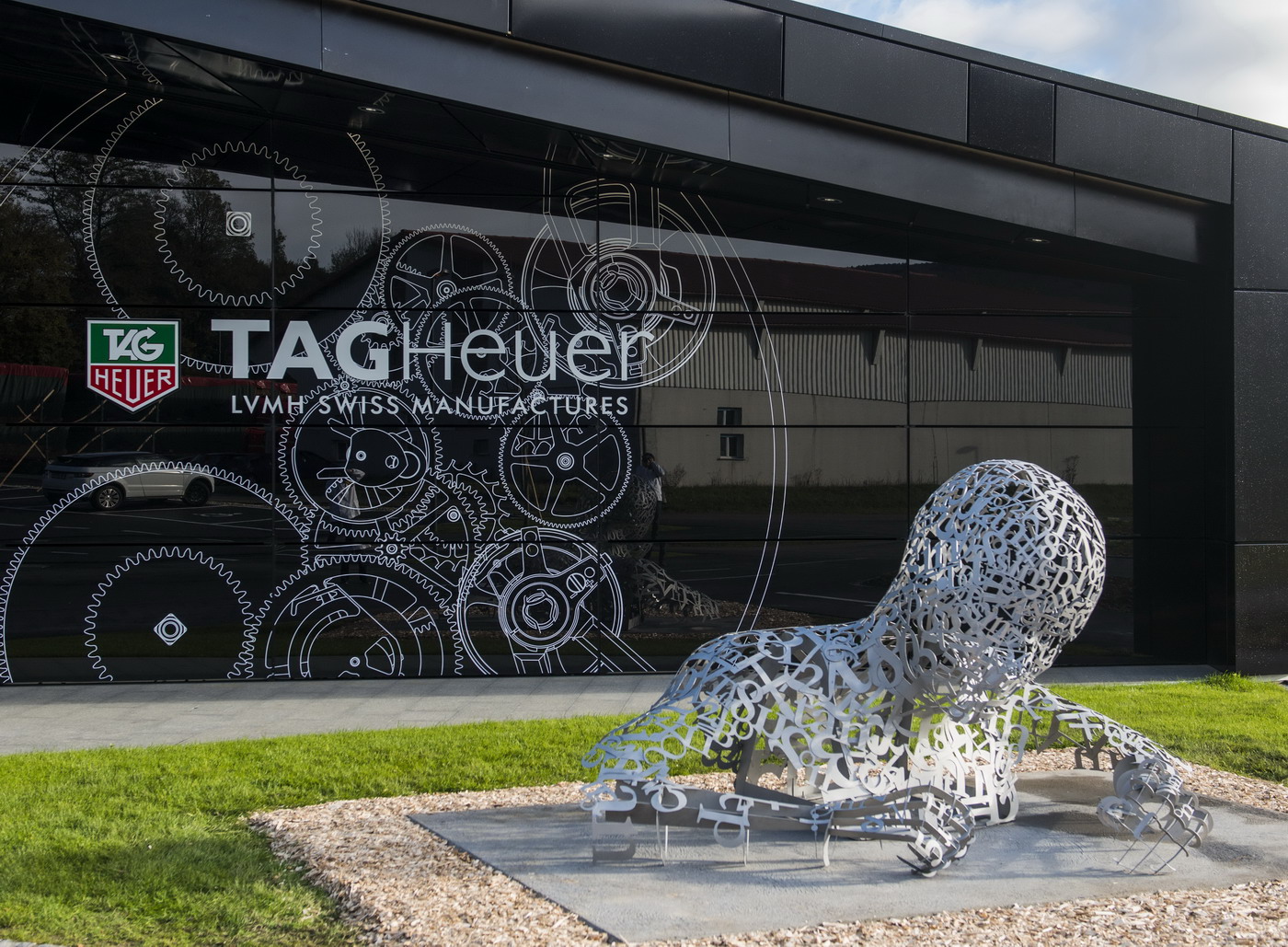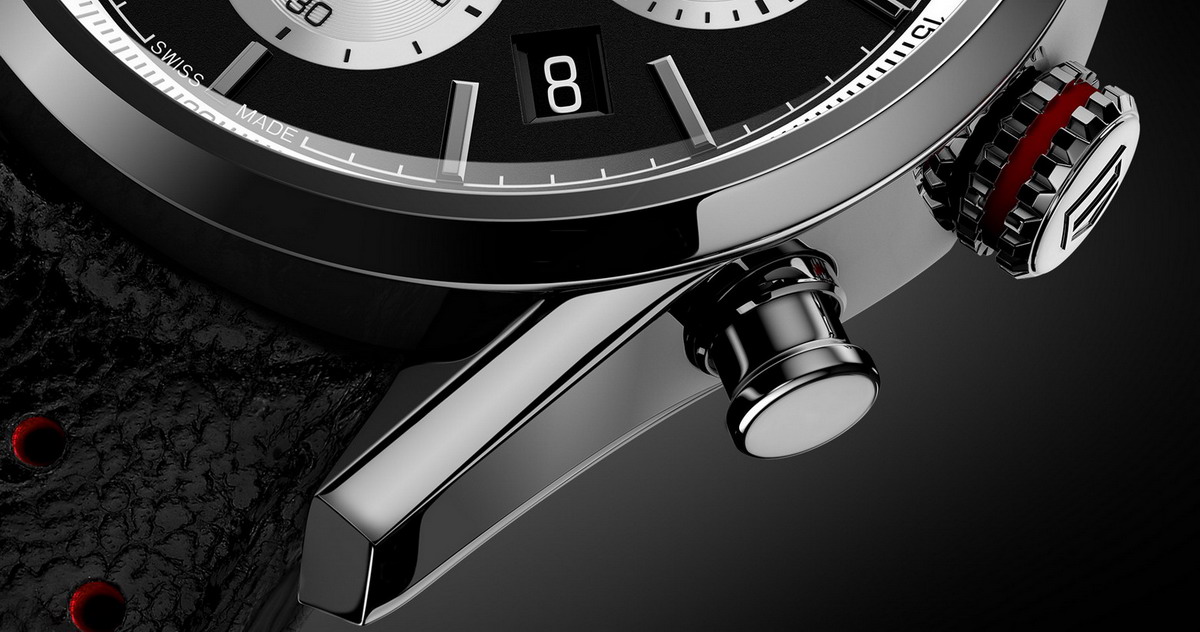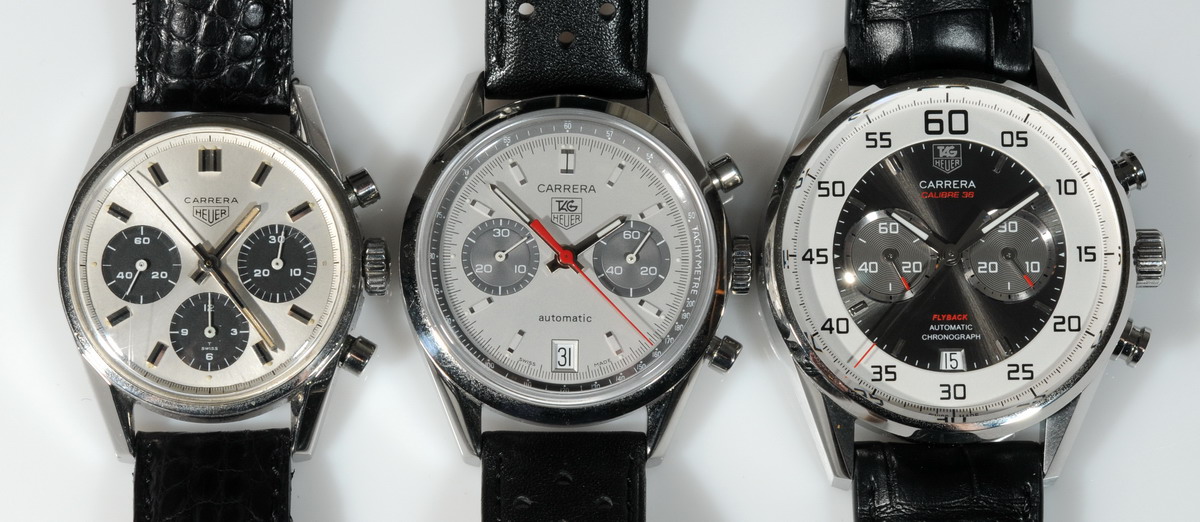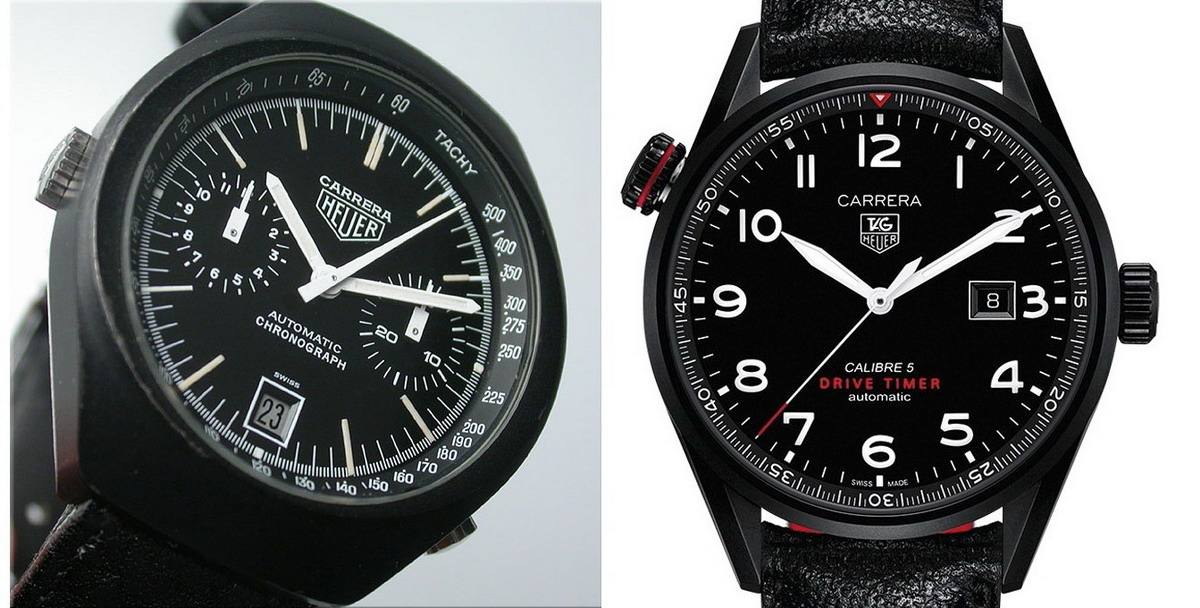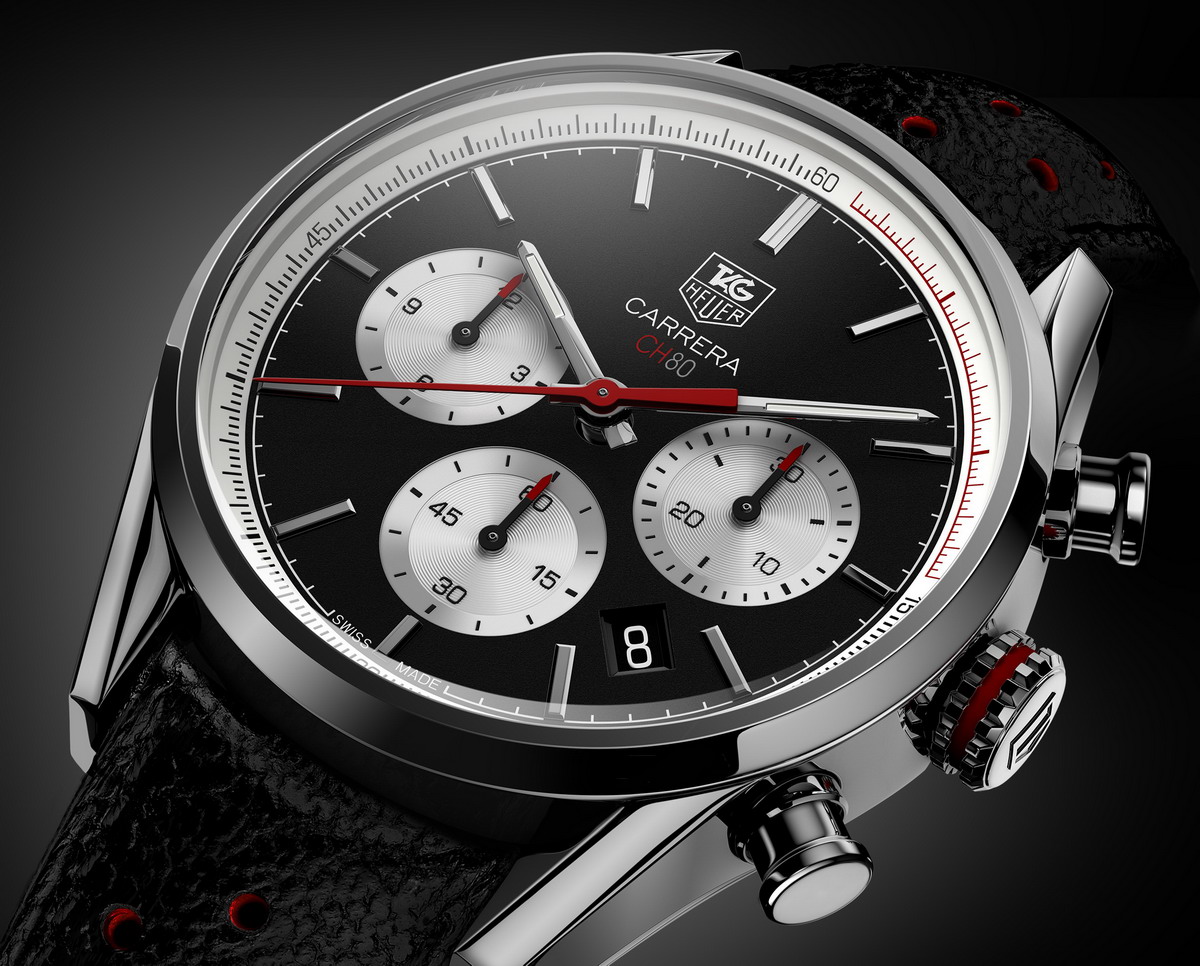As a vintage watch enthusiast, I will admit that our community can be tough on the companies that produce modern watches, especially when it comes to how today’s brands re-issue some of their legendary watches. If the brand is too literal in re-issuing one of its classic watches, we say that the company lacked creativity or imagination. If the new watch strays too far from the original one, we accuse the brand of misusing a legendary name. As much as members of the vintage community sincerely want to embrace the modern watches offered by our cherished brands, it can be difficult. Why are registers so close together? Why can’t we have a 12-hour recorder? Why is the watch so thick? Why is the watch so expensive? Sometimes I wonder whether it is even possible for the old-timers to be genuinely enthusiastic about a modern watch.
This morning, TAG Heuer introduced a new model of its sacred Carrera, powered by its new in-house movement, the CH80. Ladies and gentlemen, I am here to tell you that this new Carrera CH80 is the best looking Carrera that TAG Heuer has offered since it created its first re-issue of the Carrera in 1996. Who knows . . . with any luck at all, even some of the guys who collect the vintage Heuer chronographs might enjoy the watch!
We will start with a basic overview of the newest Carrera, then explore some of the reasons that I am so enthusiastic about this watch.
The Basics.
The TAG Heuer Carrera CH80 is offered with either a white dial (with contrasting black registers) or a black dial (with contrasting white registers), on a choice of a perforated leather strap or a stainless steel bracelet. Using the CH80 movement, the registers are laid out in a 3-6-9 pattern, with the minute recorder at 3 o’clock, the hour recorder at 9 o’clock and the running seconds at 6 o’clock. The chronograph second hand is mounted on the center pinion, for optimal legibility. The date is displayed at the 4:30 position.
The CH80 is an integrated automatic chronograph movement, with a full-sized rotor and a vertical clutch system. The movement runs at 28,800 vibrations per hour (4 hertz), meaning that it has the capability of timing in 1/8 second increments. Although not certified as a chronometer, TAG Heuer has announced that the CH80 movement will have an accuracy of minus 4 / plus 6 seconds per day, the specification for a certified chronometer. The movement is a relatively slim 6.5 millimeters thick.
The case is 41 millimeters across the dial, with a double anti-reflective sapphire crystal on the front and a sapphire display-back to show the movement. Although the specification sheet for the new Carrera does not indicate the thickness of the watch, we can assume that it is noticeably thinner than the Carrera Caliber 1887 chronograph (which is almost 16 millimeters thick).
The CH80 designation reflects two points of pride for TAG Heuer. “CH” stands for Chevenez, the location of the factory where TAG Heuer is producing these movements (as well as the Calibre 1887); the “80” tells us that the new movement has an 80 hour power reserve.
We expect that the TAG Heuer Carrera CH80 will be available later this year, at a price in the $6,000 range.
The Best of the First Carreras (1963-1968)
The new TAG Heuer Carrera CH80 incorporates many of the elements that made the earliest Carreras, produced from 1963 through 1968, icons of the Heuer portfolio. There have been hundreds of other Carreras since 1968 — in dozens of cases, with the full palette of paint colors and a variety of other elements. But for today’s collectors, most of the “grail” Carreras were produced in these first five years.
A Chronograph for Racers
Introduced in 1963, Jack Heuer designed the original Carrera as a chronograph for racers. Heuer admired the new generation of avant garde designers — Le Courbusier, Eames, Saarinen and Niemeyer – and believed that the same approach that was transforming the look of cities, buildings and furniture could be used to create a new style of chronograph. The Carrera stripped away all non-essential elements to produce the cleanest possible design. Hours are marked by thin strips of polished steel, with the thin “matchstick” hands having a strip of luminous material to ensure legibility. A unique inner bezel served the dual functions of holding the crystal tightly against the bezel (to improve waterproofing) and displaying hash marks for the fifths of seconds.
Only the crown and pushers deviated from this minimalism, being slightly over-sized to allow for operation by the racer or navigator. Compared with other watches of the period, the Carrera featured bold, angular lugs, suggesting that the watch was build for rugged duty. .
The first Carreras were offered in two color schemes – a white dial with white registers and a black dial with black registers. The movements were manual-winding, either the Valjoux 72 for the three-register version or the Valjoux 92 for the two-register model. Cases were 36 millimeters across the dial.
Contrasting Registers
By 1967, the purity of the white-on-white and black on black dials gave way to new variations, as various models of the Carrera were offered with contrasting registers – white registers on the black dial (Reference 2447 NS, shown below) and black registers on the black dial (Reference 2447SN). In addition to these three register Carreras, Heuer used contrasting registers in its Dato 12 and Dato 45 models.
You can have a look at all the vintage Heuer Carreras here.
The Carrera CH80 — Best of the 1960s
The new Carrera CH80 features the very best elements of the first Carreras, produced from 1963 to 1968. We see simple steel markers and hands; minimal decoration on the dial; the inner bezel marked in 1/4 second increments (to synch with the 28,800 beat of the movement, which is capable of timing in 1/8 second increments); and the case and lugs that defined the 1960s Carrera. We have the black-on-white “Panda”, along with the white-on-black “reverse Panda”, with the registers on the CH80 being located exactly where they should be – the right distance between the center of the dial and the 3, 6 and 9 markers. If we list the elements that made the first Carreras a special chronograph for the racers, 51 years later we see these same elements in the Carrera CH80, executed in just the right way.
The Best of the TAG Heuer’s Carreras (2010-2014)
The CH80 Movement
TAG Heuer is proud of its in-house movements, and for good reason. When we look at the movements that powered the Carreras in the previous decade (say, 2000 through 2009), most were based on ETA movements, which had two disadvantages for TAG Heuer. First, TAG Heuer was dependent on a third party for its supply of these movements. Second, the quality of many of these movements was not up to the standards that TAG Heuer could achieve with its own in-house movements.
With the development of the CH80 movement, as a companion to the Calibre 1887, TAG Heuer seems to well positioned to have chronometer-quality movements for the heart of its chronograph range. I have been impressed with the superb quality of the Calibre 1887 movement, with the three that I own all running within a second or two per day. Adding the CH80 to this line-up offers several advantages – the 3-6-9 dial layout that traditionalists demand; proper placement of the registers in a 41 millimeter case; and thin dimensions that will allow chronographs that will not be bulky or top-heavy.
Modern Accents
The newest Carrera incorporates several elements from TAG Heuer’s recent re-issues. Jack Heuer was a big fan of red accents, and the bright red chronograph second hand and the tips of the three needles continue add an element of fun, while subtly paying tribute to the man who gave us the first Carrera in 1963. The crown and pushers follow the style of recent Carreras, while their healthy size also reminds us that one of the selling features of the very first Carreras.
Size and Proportions
The original Carrera from the 1960s was a 36 millimeter watch. Over the last decade, we have seen the re-issues grow from 39 millimeters (for the 40th Anniversary model, offered in 2004), to 41 millimeters for the first Calibre 1887 Carrera (2010), to 43 and 45 millimeters, for the Caliber 36 and 50th Anniversary models. The CH80 Carreras are 41 millimeters, an appropriate size for a classic-inspired watch and a comfortable day-to-day size for many enthusiasts.
Beyond size, however, the TAG Heuer CH40 Carrera appears to have the right proportions. The size and placement of the registers, the length of the hands, and the style of the crown and pushers look perfect to my eye. In an era when we see registers that often appear too close to the center of the watch – resulting from older, relatively small movements being used in larger modern cases – it is refreshing to see the right proportions between the registers, markers and hands.
The Best of the Next Five Years
With the arrival of the newest Carrera, with its entirely new case and movement, we can only begin to wonder what could lie ahead, for new models. TAG Heuer looked back to the Carreras of the mid-1960s for the styling cues of the new models, so we ask what we might see if TAG Heuer to examine its portfolio of the iconic Carreras.
One theme that quickly comes to mind is the black PVD Carrera that Heuer offered in TBD (shown on the left). Noting that TAG Heuer has recently introduced its Carrera Drive Timer with a black case, we wonder what a CH80-powered chronograph in this case might look like. For the driver or pilot seeking the ultimate in legibility, this might be the ultimate Carrera.
It’s probably further down the list of priorities, but if the new CH80-powered Carreras will pay tribute to the great Carreras of the “Golden Age” of motorsports, then an 18 karat gold case, with a champagne dial and black registers might be nice. In the 1970s, Jack Heuer presented an 18 karat gold Reference 1158 Carrera (shown below) to each Ferrari Formula one driver. What is TAG Heuer use its new case and movement to create a homage to this chapter in Heuers history.
And What Shall I Call This Posting?
I’ll admit it – I struggled long and hard to come up with a title for this posting. I wanted to use some combination of the words “Best” and “Carrera” and “Ever”, but recognized quickly that I needed some way of qualifying the praise. I thought of characterizing the Carrera CH80 as the “Best Carrera Since 1968”, but the 18 karat gold Carreras worn by the Ferrari drivers in the 1970s gave me some pause.
So then I wondered whether this one might be the best Carrera that TAG Heuer has offered, meaning the best one since the first re-issue of the Carrera in 1996. I tries to visualize all the Carreras that TAG Heuer has offered since 1996. I looked at the amazing white-on-white Calibre 1887 Carrera that I am wearing at this very moment, and wondered whether I could be so cruel as to move it down to number two on TAG Heuer’s hit parade. And what about the Calibre 36 Carrera, with its El Primero flyback movement? And then there are the ones that Jack Heuer had his hand in — the Carrera that honored him on his 80th Birthday and the one for the 50th Anniversary of the Carrera. Must these models also move down the list of my favorite TAG Heuer Carreras?
In the end, I believe that I am justified in calling the new TAG Heuer Carrera CH80 the “Best (Looking) TAG Heuer Carrera Ever”. That’s the highest praise a watch can earn, based only on a handful of photos, a specification sheet, and a press release. I am optimistic, however, that after I have the opportunity to see this one in the metal and wear it for a few days, I will want to remove the word “Looking” and anoint this CH80 as the best Carrera that TAG Heuer has ever produced.
Jeff Stein
March 26, 2014
